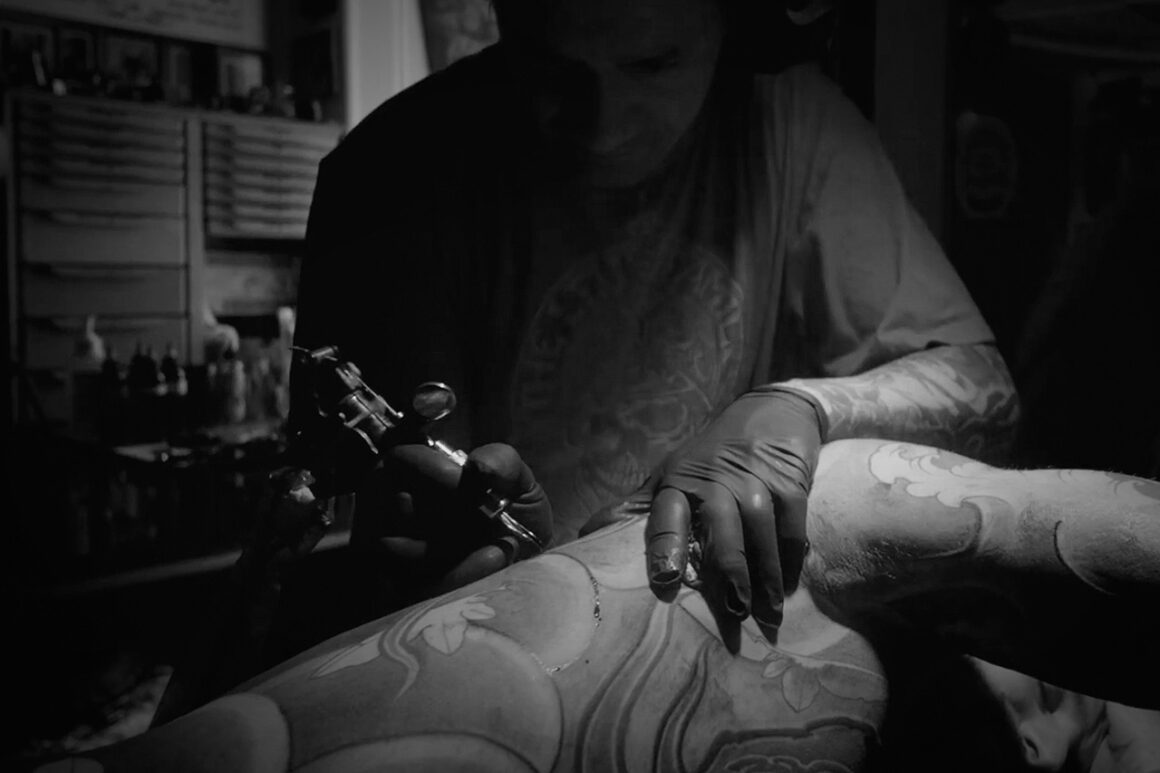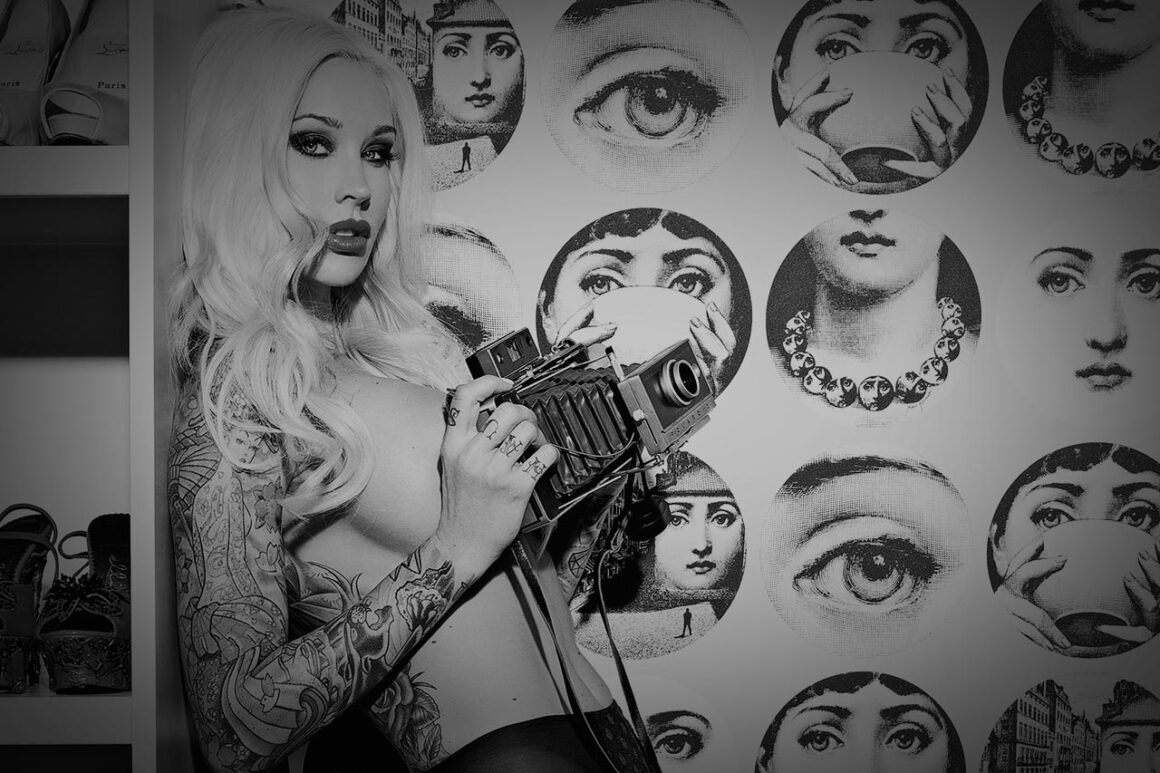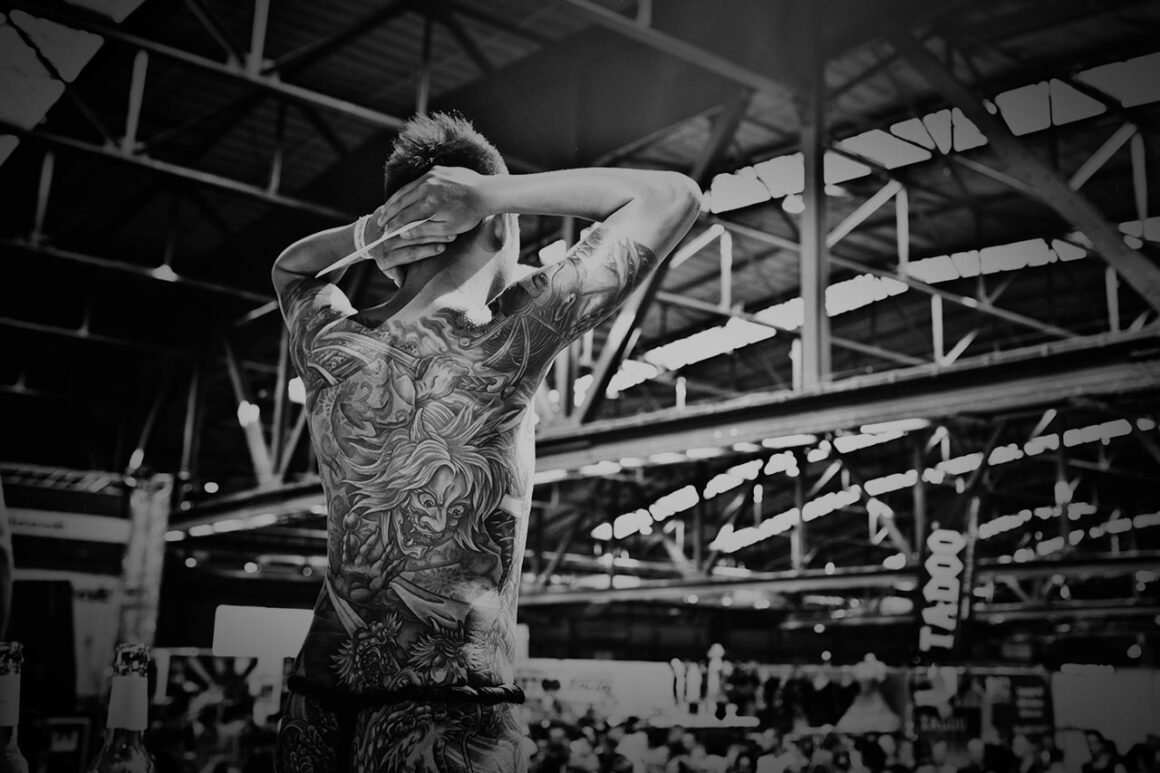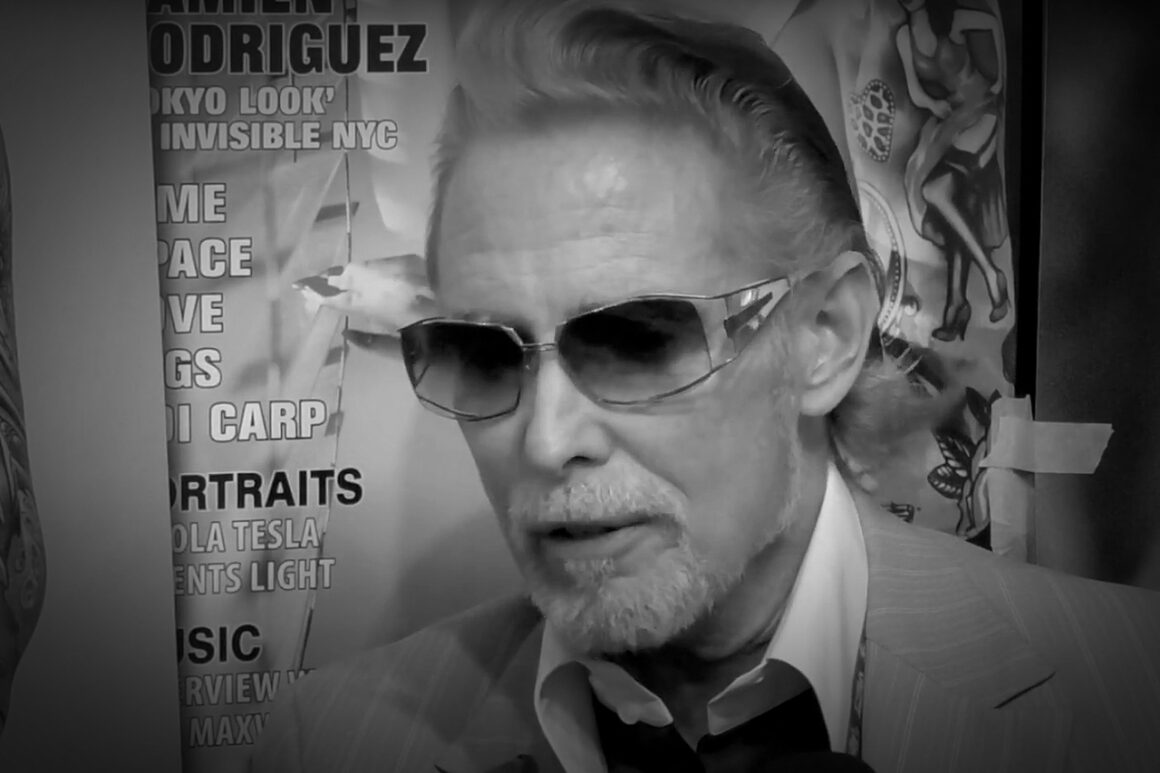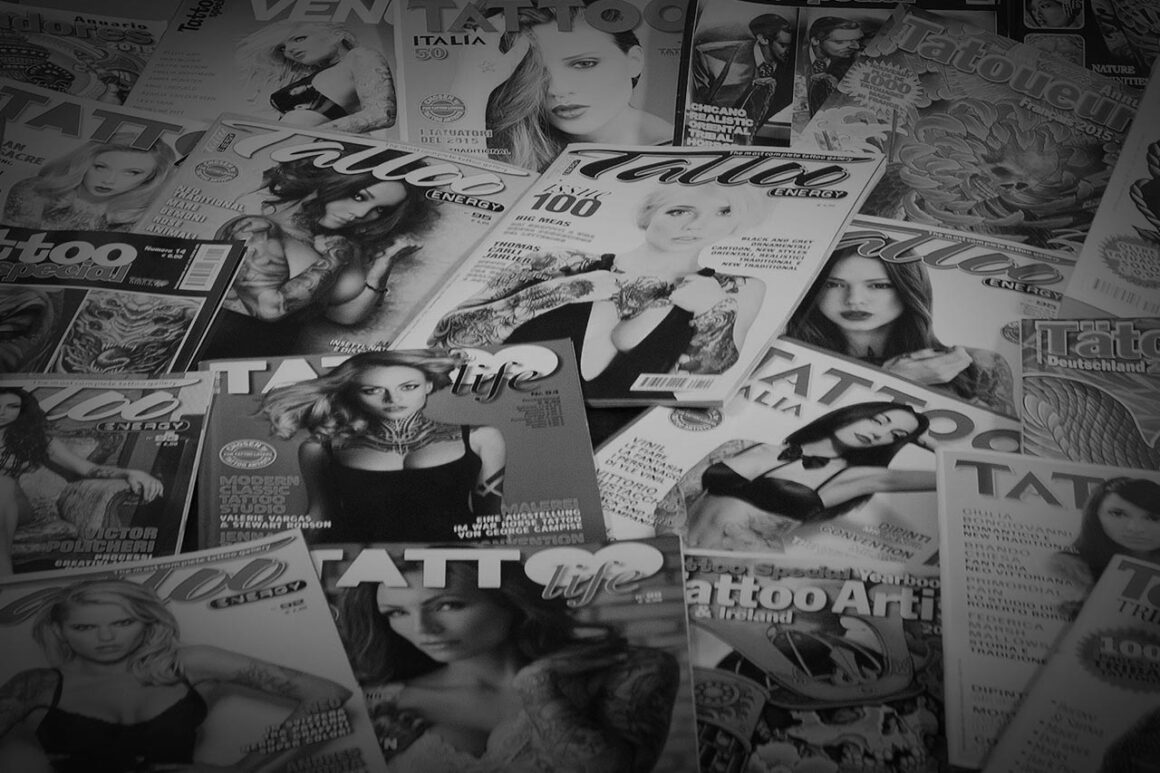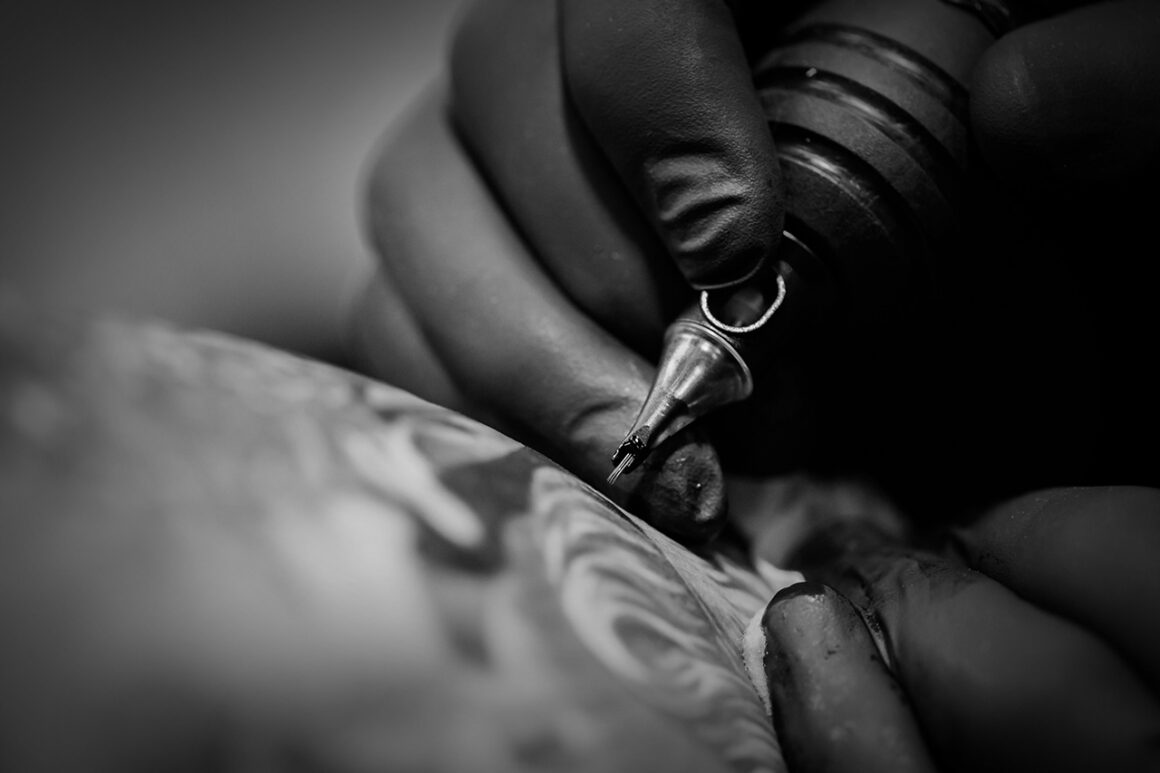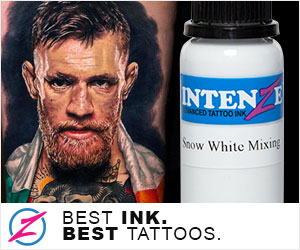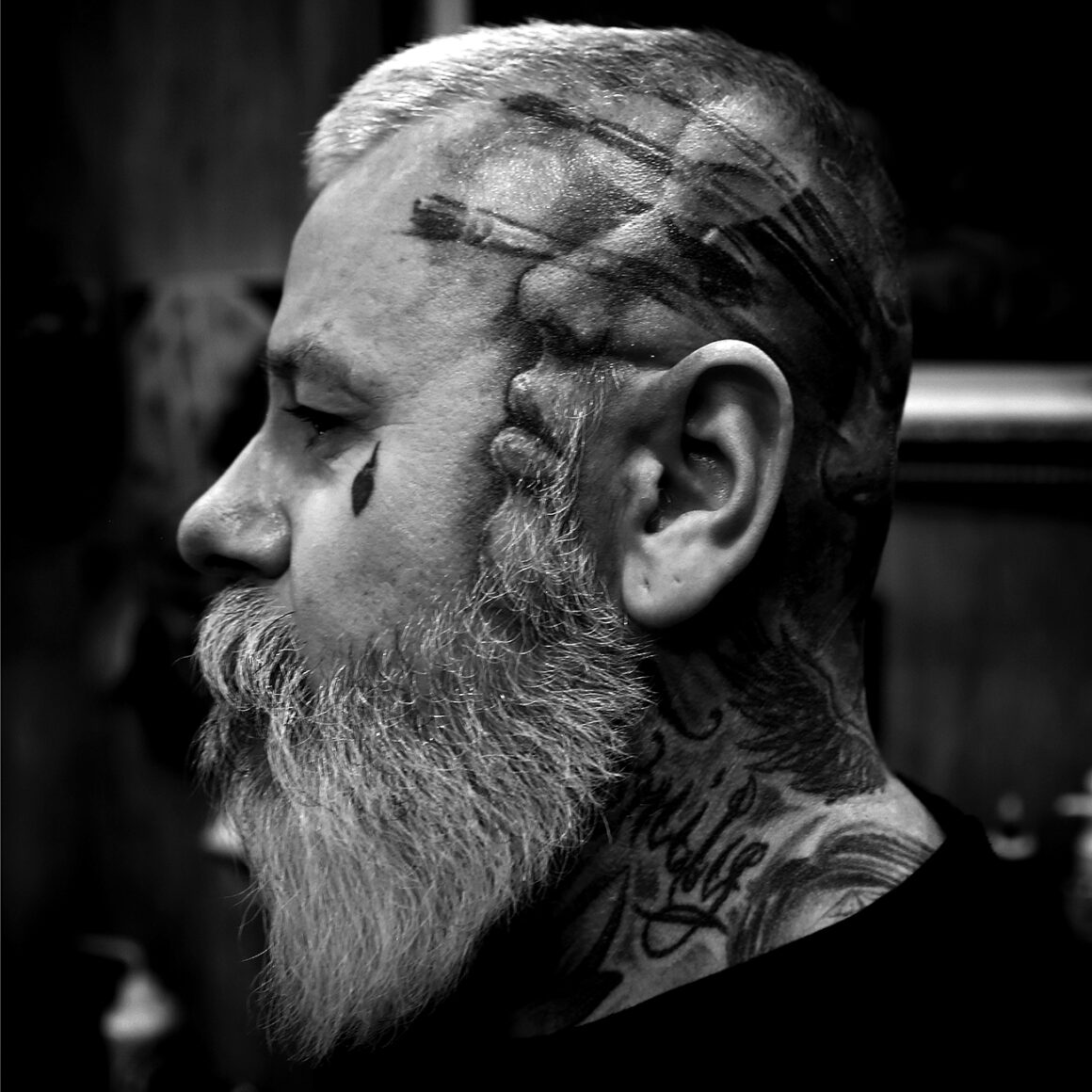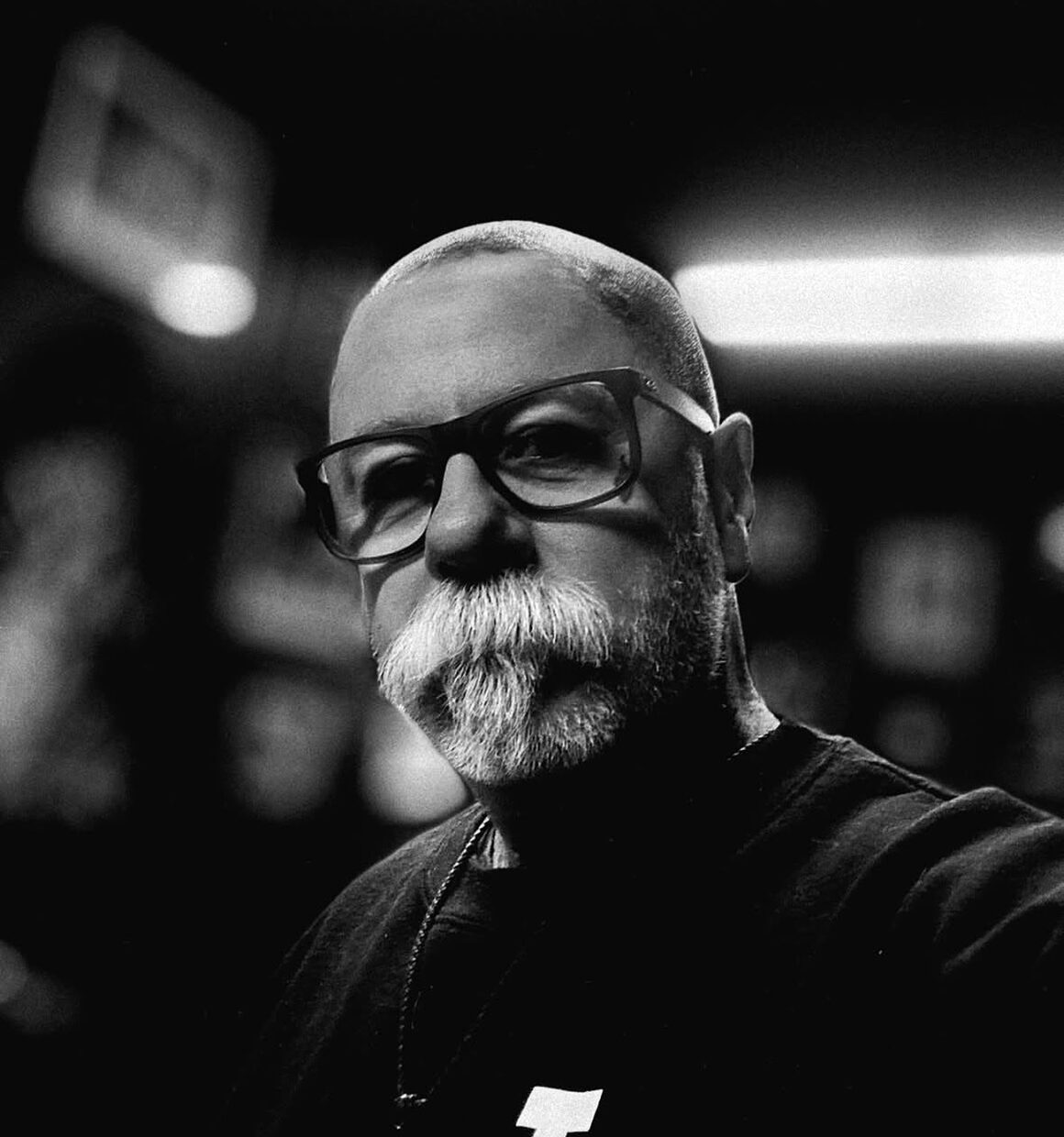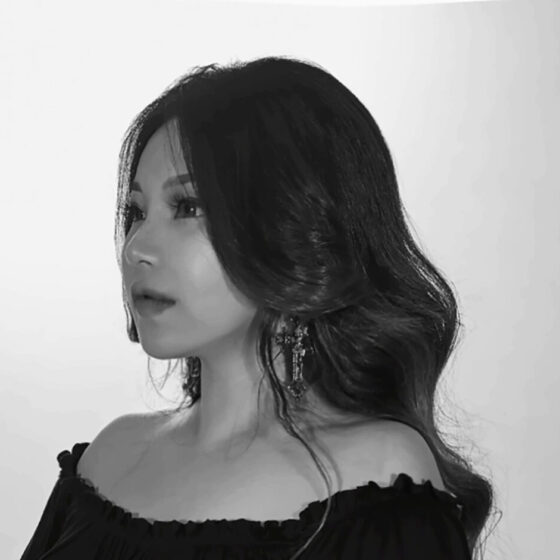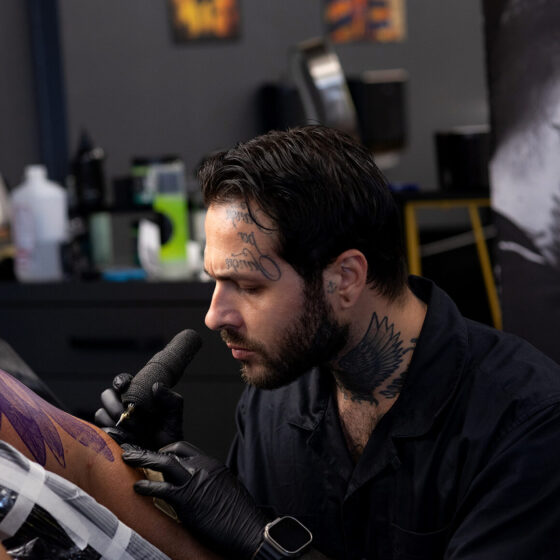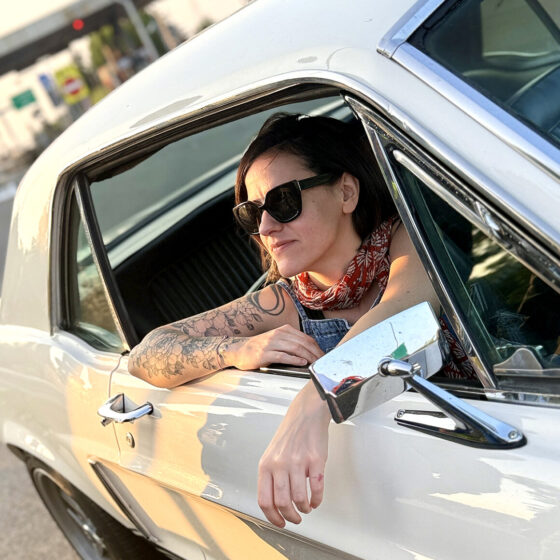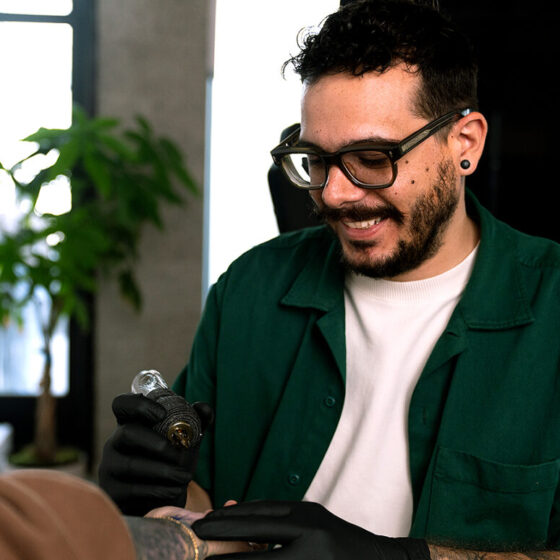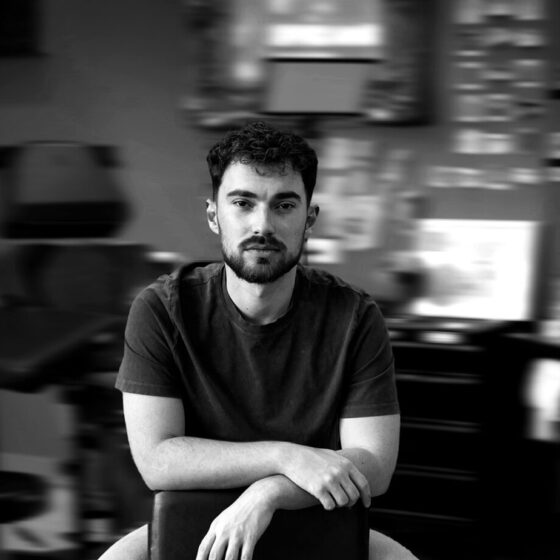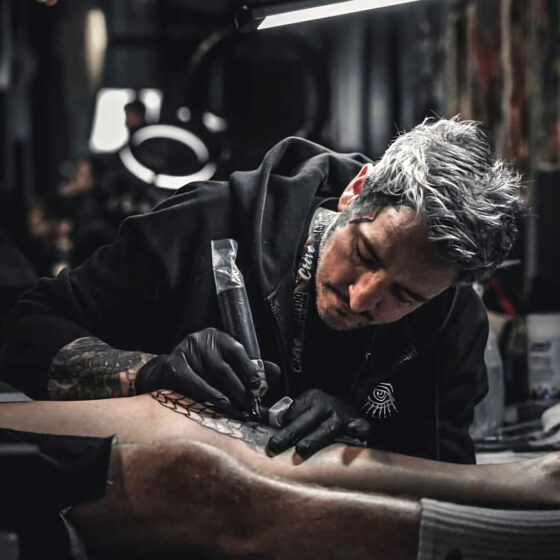With a strong passion for black and grey tattooing and a custom approach, British tattoo artist Aaron Raw has been steadily building his name in the tattoo community. His works stand out for the attention to detail, depth of shading, and personal touch.
In this interview, Aaron talks to us about his journey into tattooing, started in Lancashire where he still lives and works, the evolution of his style, and the inspirations that have shaped his creative path, from his background in the signwriting and graphics world, and his passion for hip hop, West coast rap.
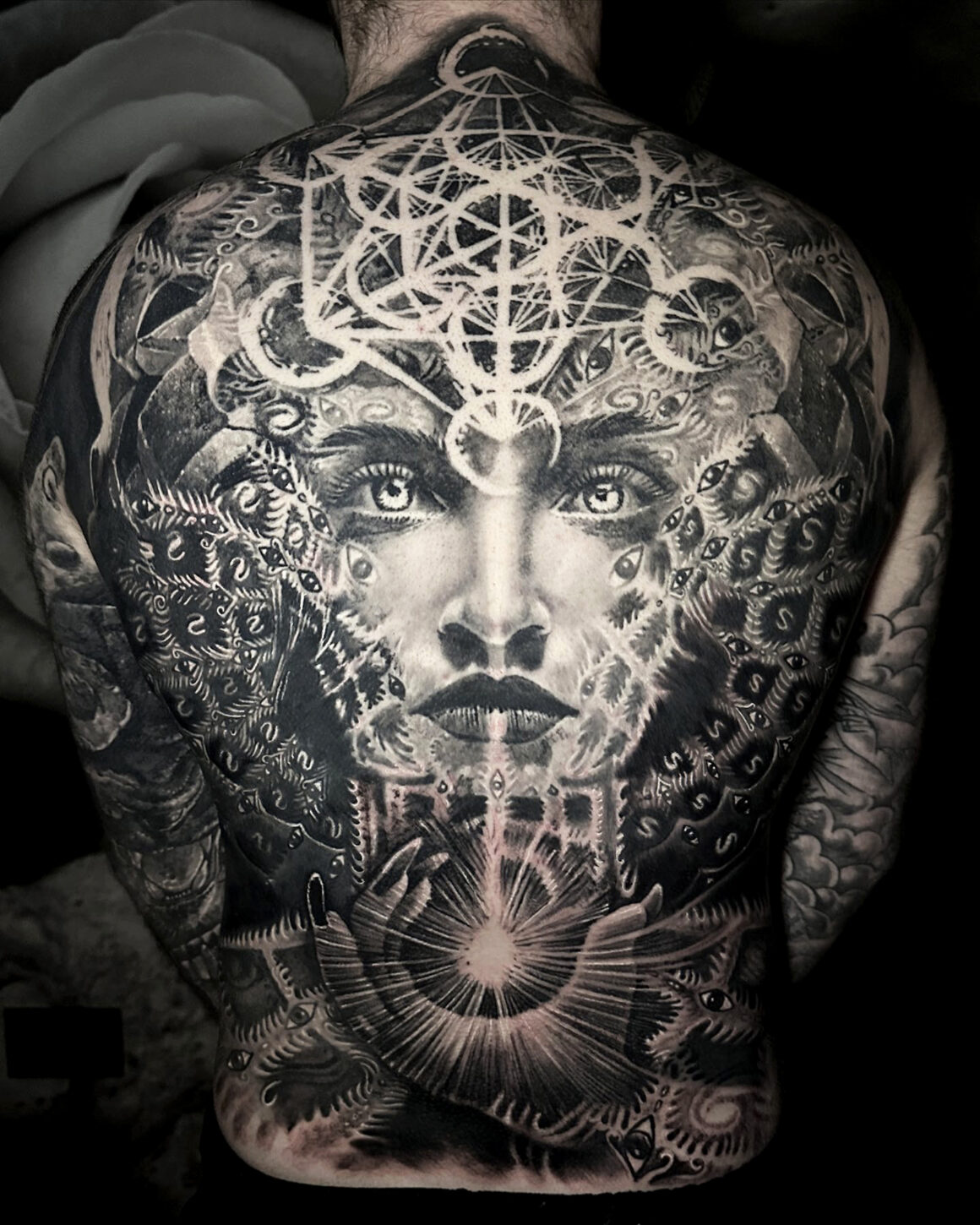
Arron, would you like to tell our readers what first drew you to the world of tattooing?
I got my first tattoo in 1994 when I was 18. Back then, tattooing wasn’t nearly as popular as it is now. I’d always been involved in art—it was the only thing I seriously considered as a career after leaving school. I was working as a traditional signwriter at the time, and I’d ask the tattoo artists who worked on me how to break into the industry. Most of them were pretty blunt and just told me not to even ask! Over the years, I continued getting tattooed by different artists, and almost all of them gave me the same response…
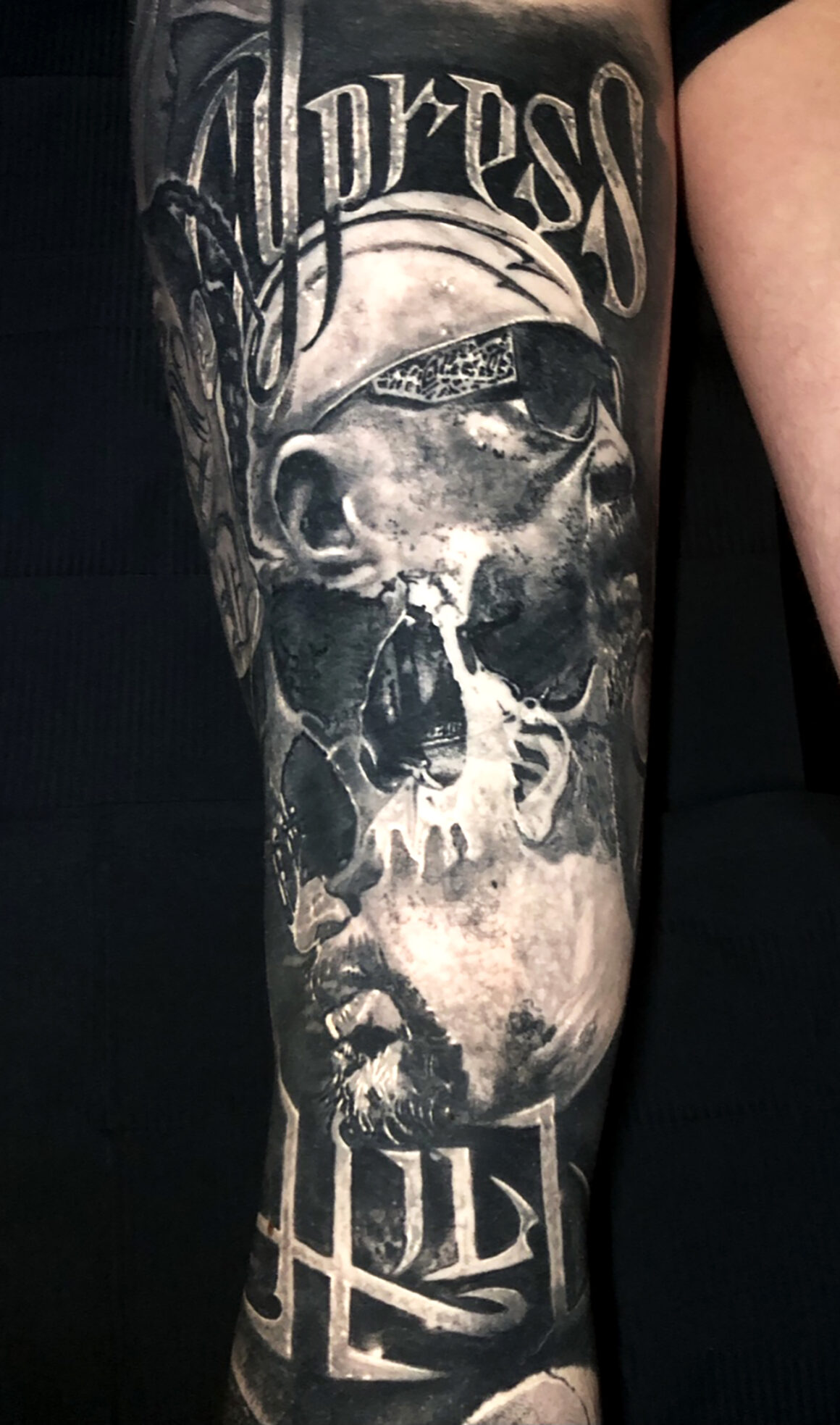
Was there a particular moment when you realized this was the path you wanted to follow?
It was something I’d always wanted, but the defining moment came in 2010. I was in and out of the hospital with stress-related illness caused by running my successful sign and graphics business. The business had a great reputation, but with success came overwhelming pressure. I had spoken to my wife many times about my dream of becoming a tattoo artist. Eventually, we both agreed it was time to walk away from the graphics world and pursue tattooing full-time.
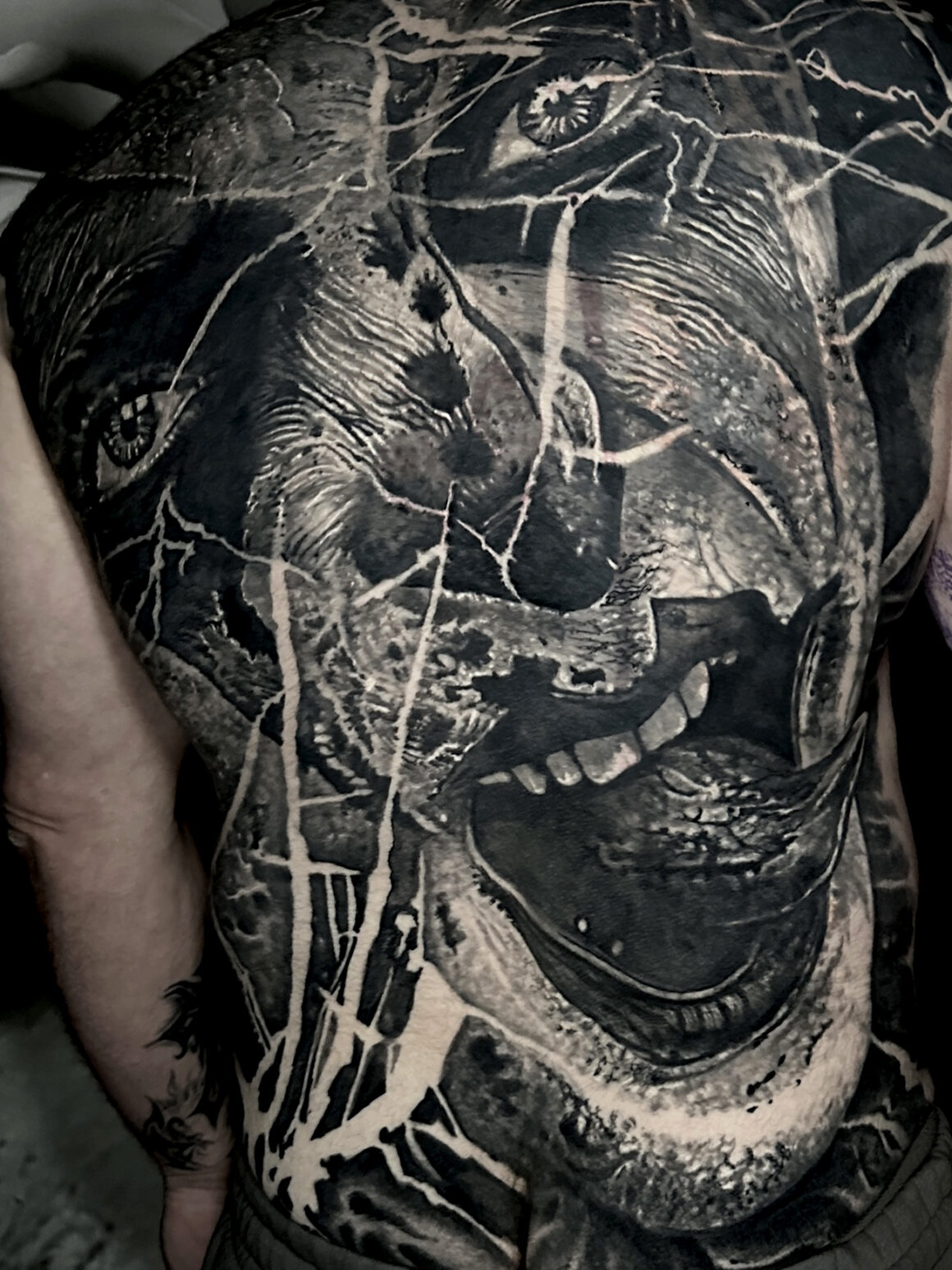
I owe a lot to my wife for supporting me through that transition. We went from earning a solid income to nothing, almost overnight. But I had spent years soaking up knowledge from the artists who tattooed me—especially Lee Woods, a now-retired artist from Darwen in Lancashire. I opened a private studio in 2011 and got officially registered with the local council. I knew I had to make it work.
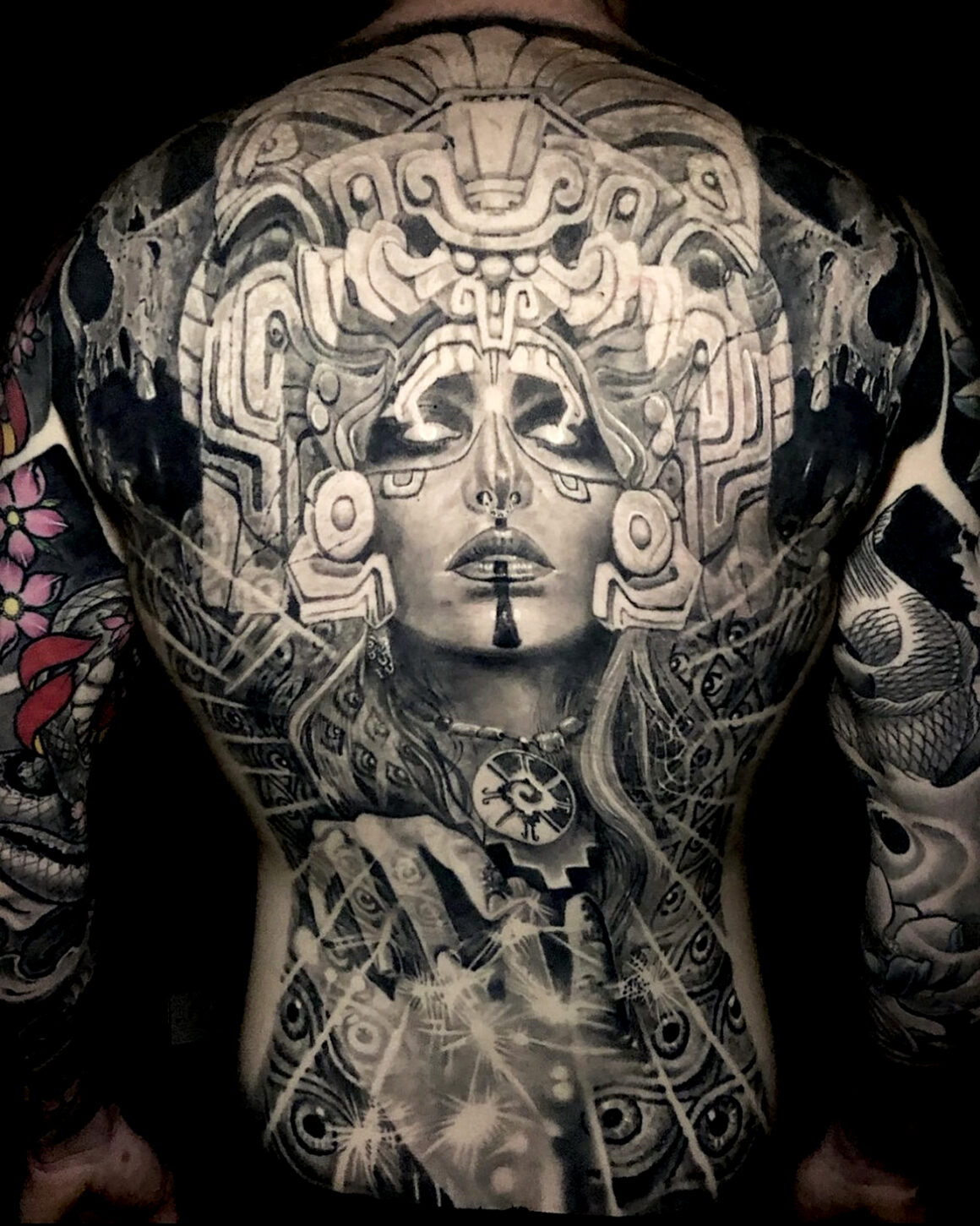
Friends and family were my first clients. Around the same time, I connected with Dan Hancock. He was in between studios, and I invited him to work with me for a few weeks. Those few weeks turned into two years. I learned so much from Dan—I’d even say I was lucky enough to be one of his apprentices, in my own studio.
Everything happens for a reason, right?

You’ve chosen to specialise in custom black and grey work. What attracted you most to this technique?
I’ve always been into black and grey. I grew up listening to hip hop—especially West Coast rap—and I loved the tattoo style that came out of that scene. That L.A. vibe really spoke to me. Of course, early in my career I did a bit of everything, but I always knew I wanted to focus on black and grey. That was the goal from day one.
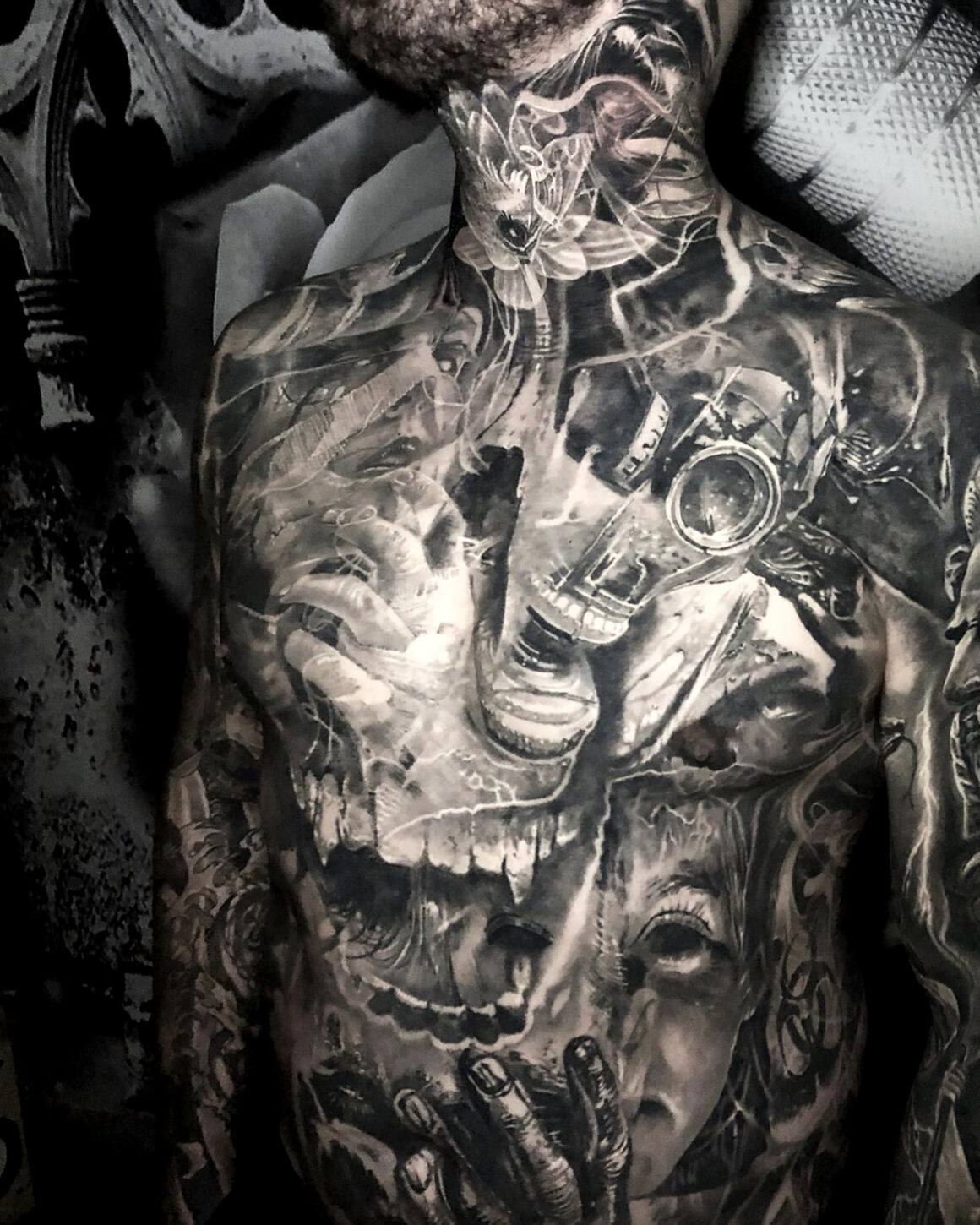
How would you describe your personal style within black and grey tattooing?
Constantly evolving. These days, I’m fortunate to do a lot of free-rein pieces. I like dark, high-contrast work regardless of the subject matter. That level of freedom only came through persistence and pushing myself with every single tattoo. I never stay still. I love the design process—but even more, I love the final result and the satisfaction of a happy client. If they’re happy, I’m happy.
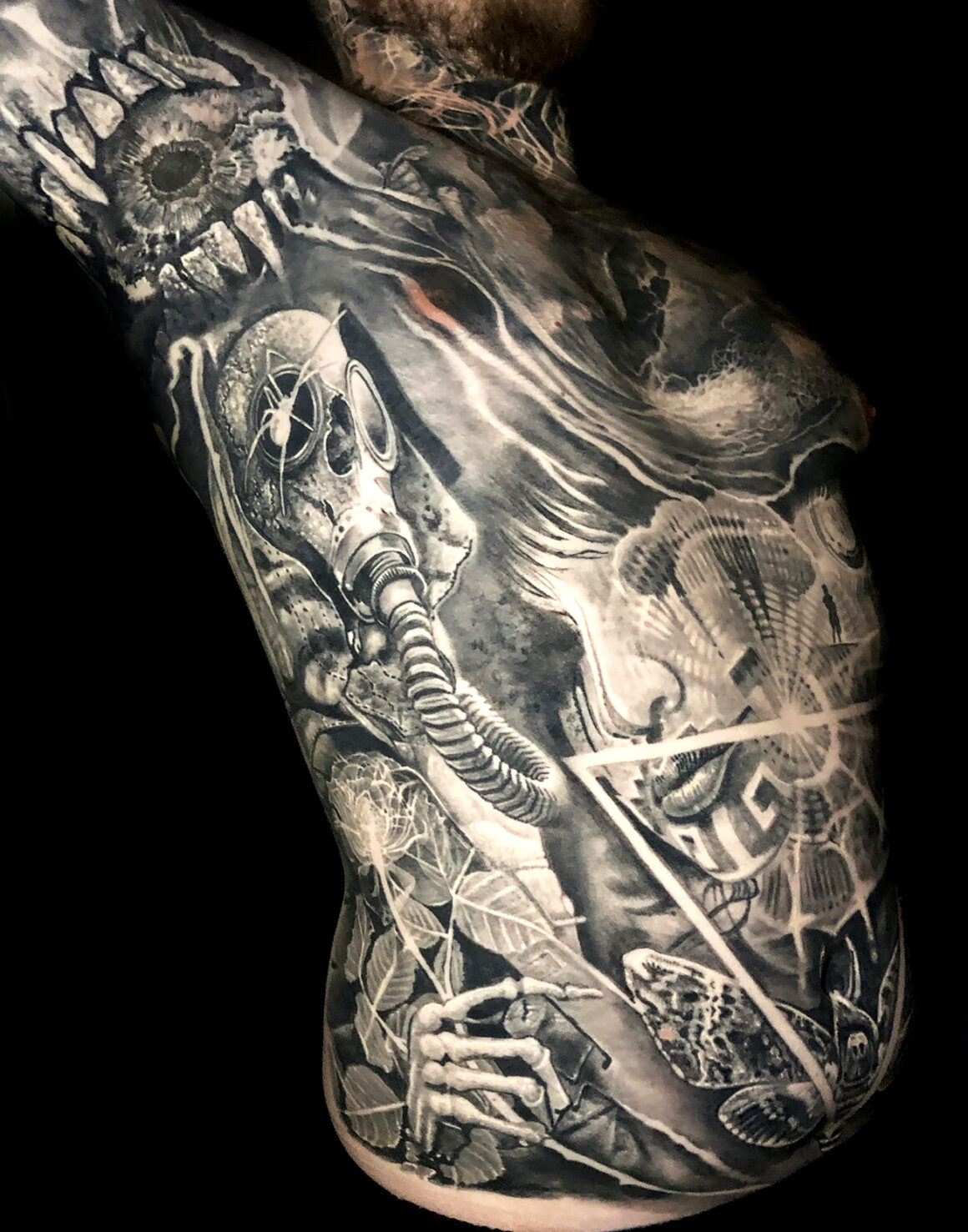
What features do you always try to bring into your pieces?
Balance. Like most things in life, balance is key. I always aim for strong composition, high contrast, and a meaningful story.
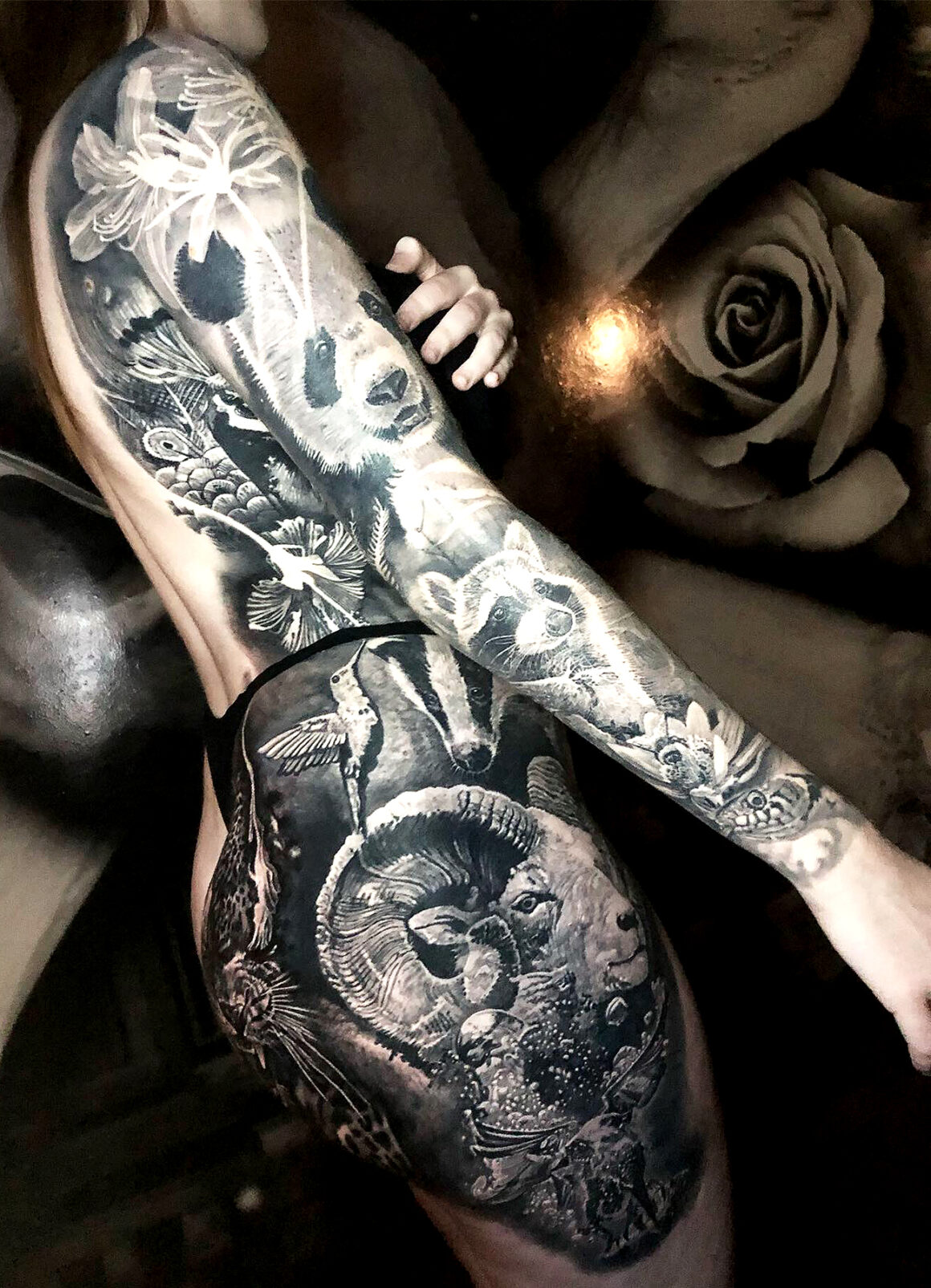
Your work is very detailed and focused on shading. How does one of your projects evolve from concept to completed tattoo?
It usually starts with the client picking three of my previous works that they love most. Then they send me a clear photo of the area they want tattooed. I take inspiration from those pieces but always create something new—no repeats.
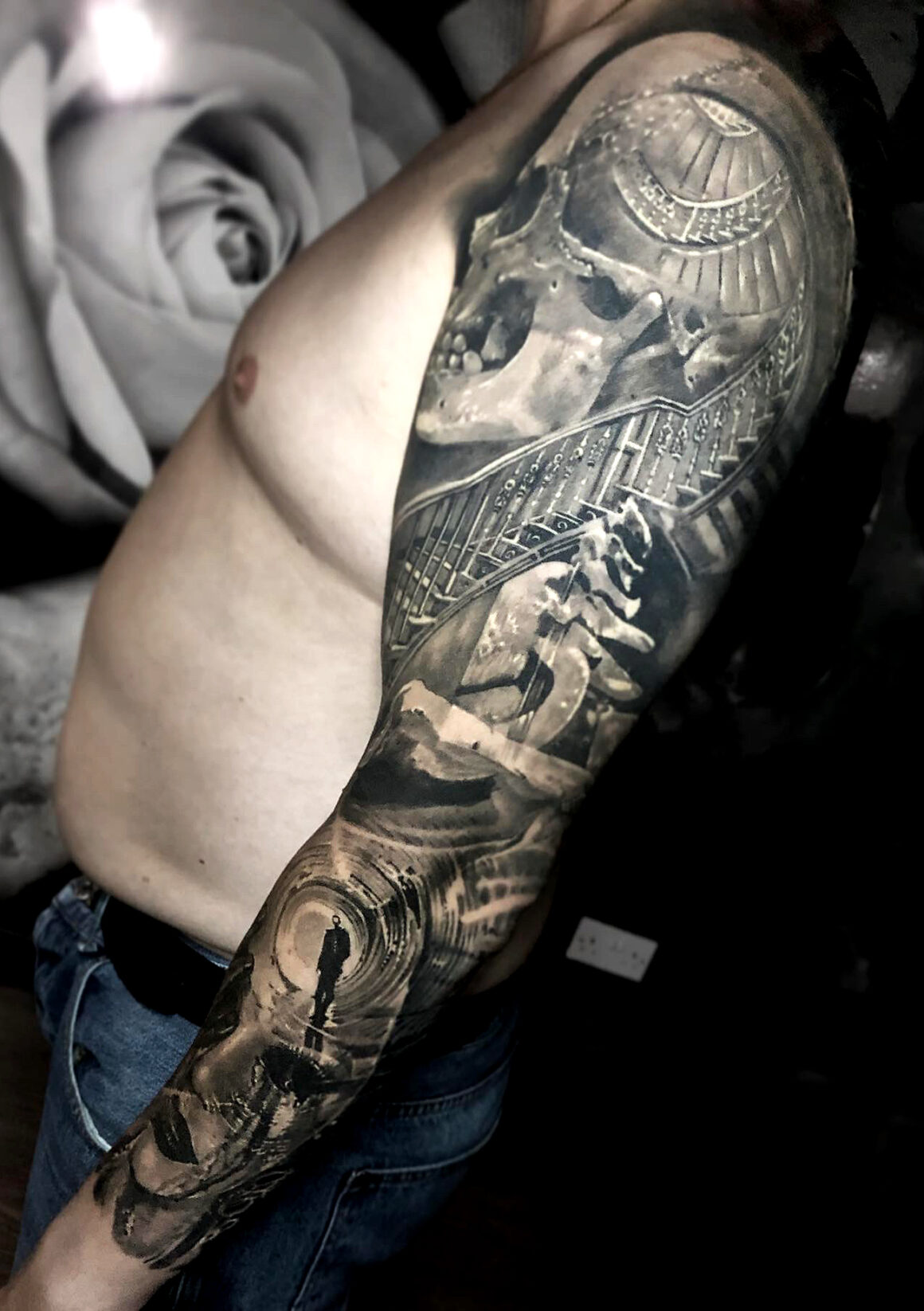
Every client gets a one-of-a-kind design. I completely immerse myself in the journey from start to finish. Designs are usually created the day before the session. I feel like I’m channeling the work more these days, and that comes from the balance I mentioned earlier.
I love the design stage, but the actual tattooing is what I live for.
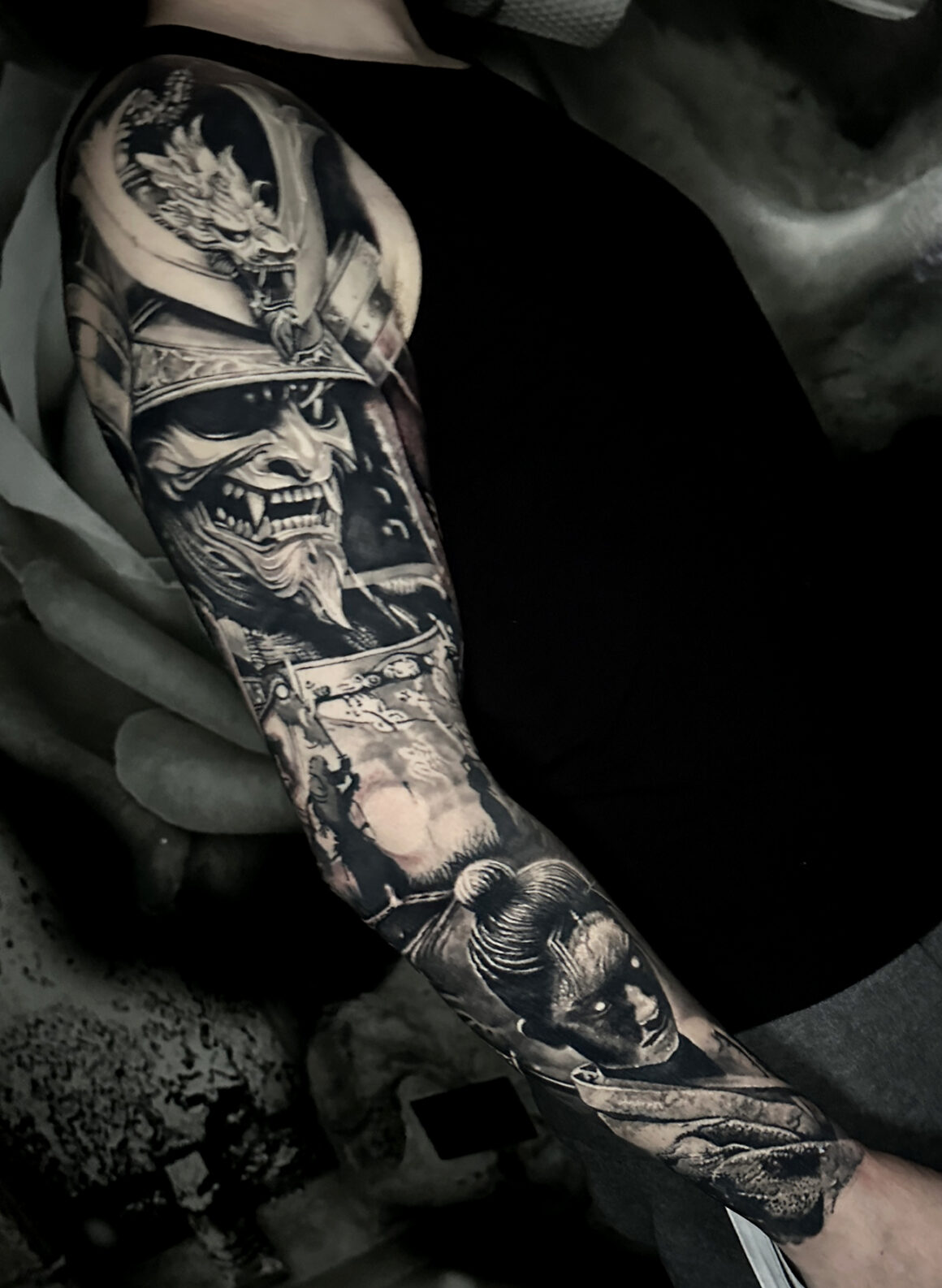
When working with clients, do you leave space for improvisation?
Always. The design is just a guide. I’ll make adjustments during the session if I feel it improves the piece. It keeps me sharp, keeps things exciting.
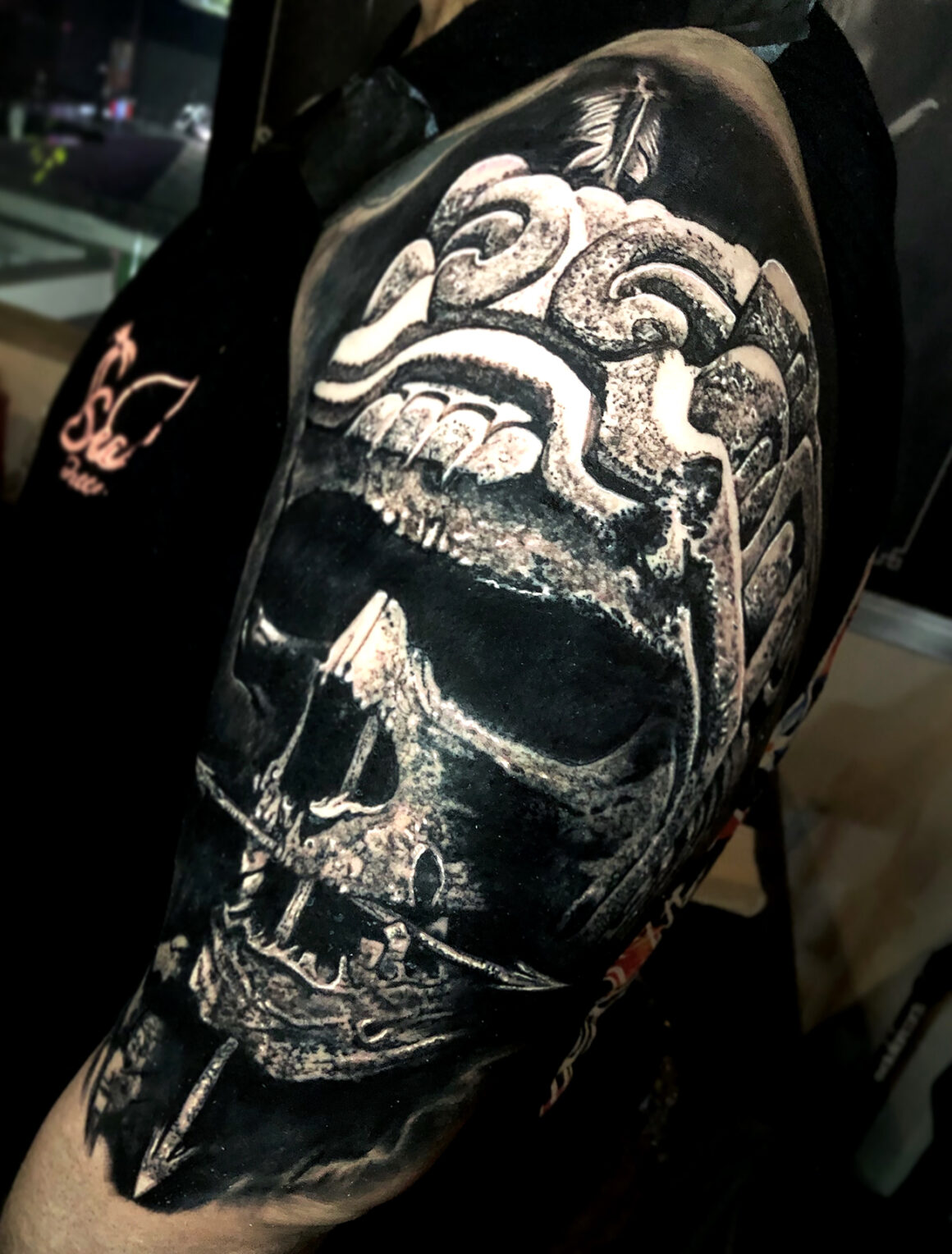
Are there any artists who have particularly influenced your development?
Too many to mention, really. Being inspired is essential for growth. The moment you think you’ve made it, you may as well quit. I’m always learning. Some names that stand out: Carlos Torres, Dan Hancock, Jak Connolly, Chuey Quintanar, Bob Tyrrell, Robert Hernandez, Mister Cartoon, Franco Vescovi, Eric Gonzalez, Paul Talbot, Mark Gray, Anrijs Straume, Macko, Boris, Nikki Norberg, Tony Mancia, Jason Butcher, ColorCrimes, Juan Sanchez, Jo Harrison, Victor Portugal, Nikko Hurtado, Paul Booth, Matt Jordan, Ryan Evans, David Vega, Ben Kaye, Carl Grace, Norm, Eliot Kohek, Fred, Carlos Macias… The list goes on and on.
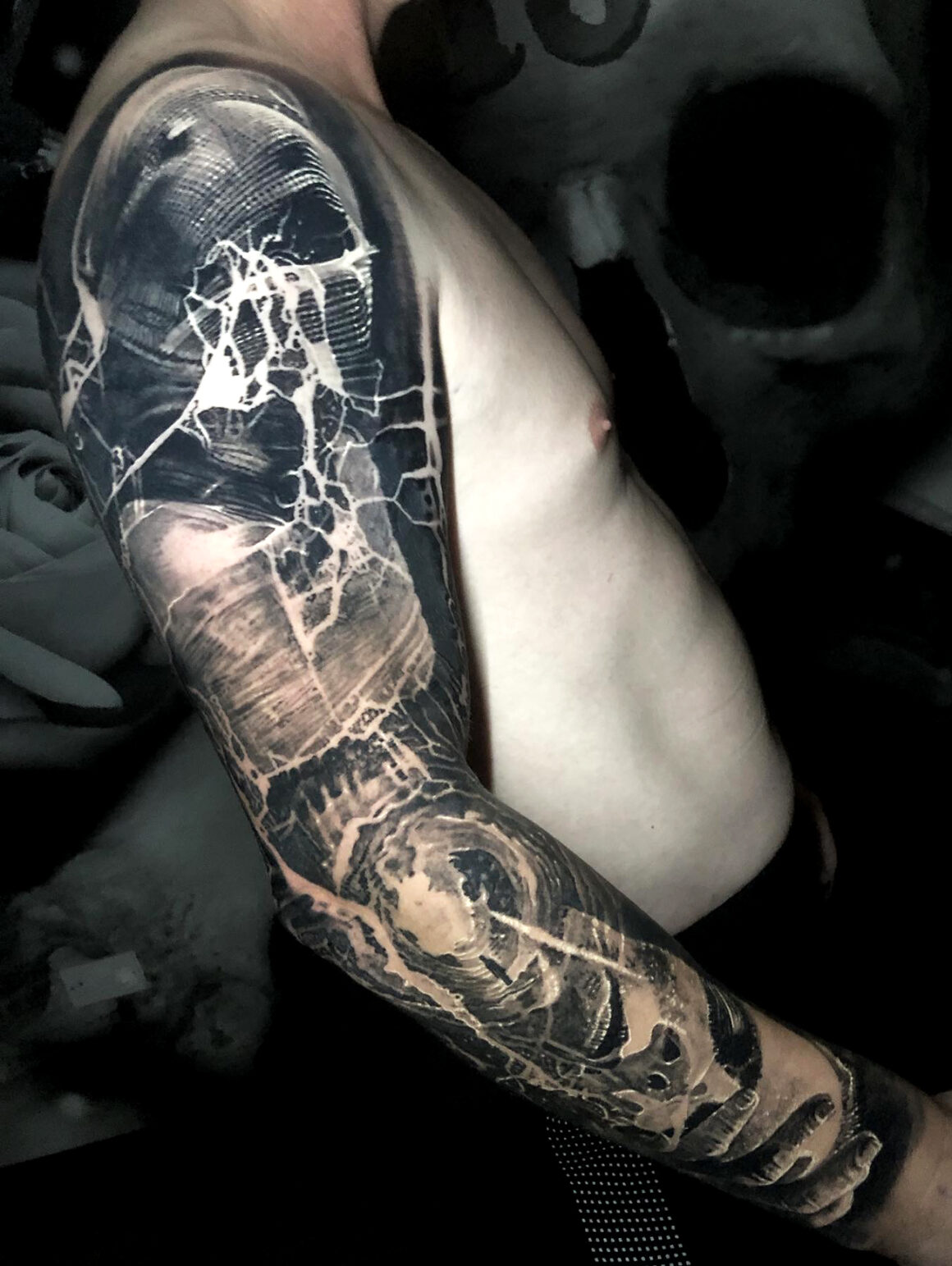
As an English tattoo artist, do you feel there’s a local black and grey scene that influenced you, or were you shaped more by international styles?
Definitely a mix of both. Traveling the world to tattoo has played a huge role in shaping my career. I’ve made a lot of friends along the way—and still am. There’s a great black and grey scene here in the UK, and I’m proud to be part of it.
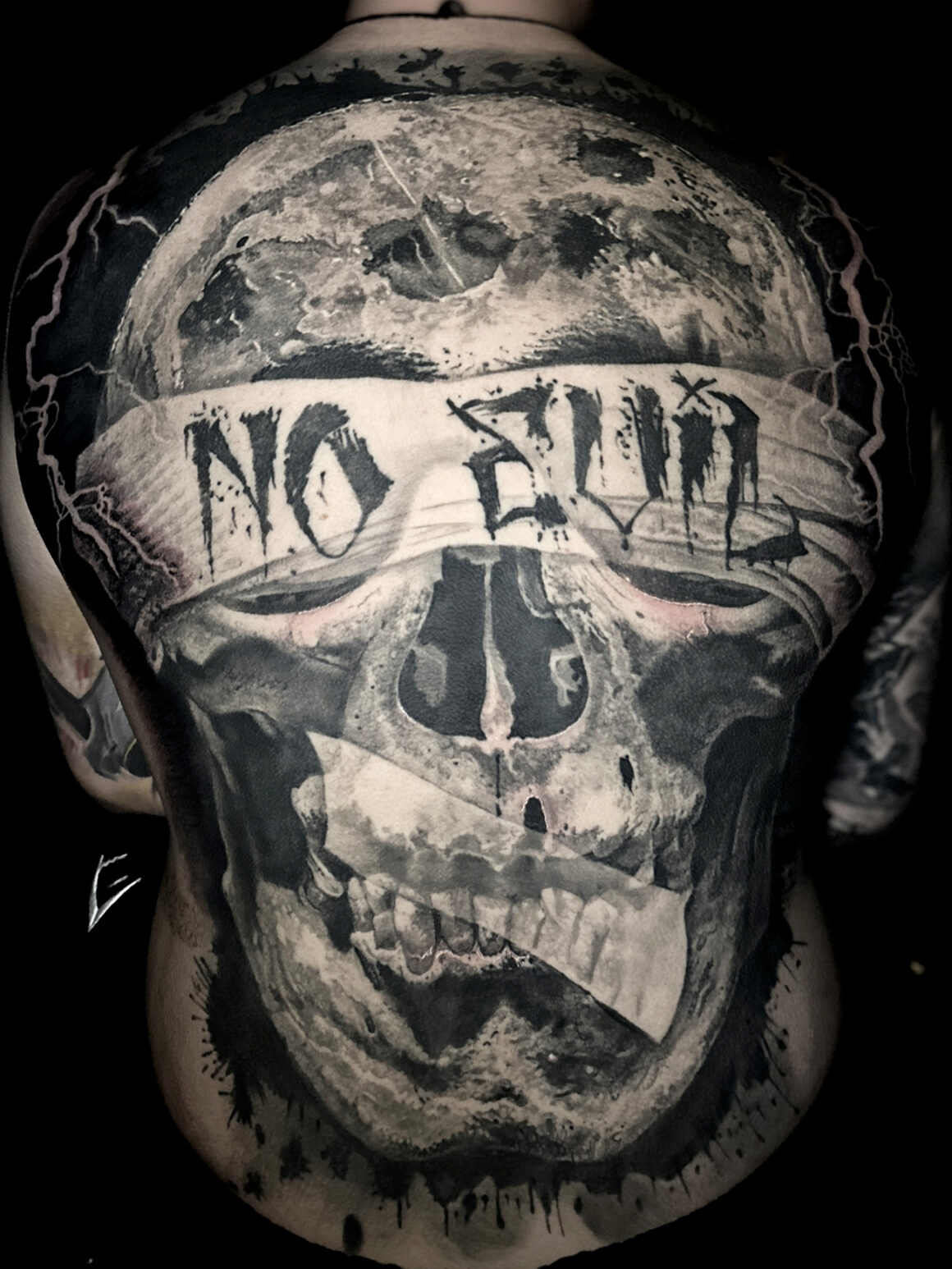
What are the biggest challenges when working in black and grey? And what do you enjoy most about its creative potential?
Cover-ups are probably the biggest challenge—I do a lot of them. But I enjoy the problem-solving aspect. Black and grey is timeless. It’s like black and white photography—it never goes out of style. I love how my style continues to evolve over time. I’m always pushing boundaries.
Tattooing is more than a job to me. It’s a way of life.
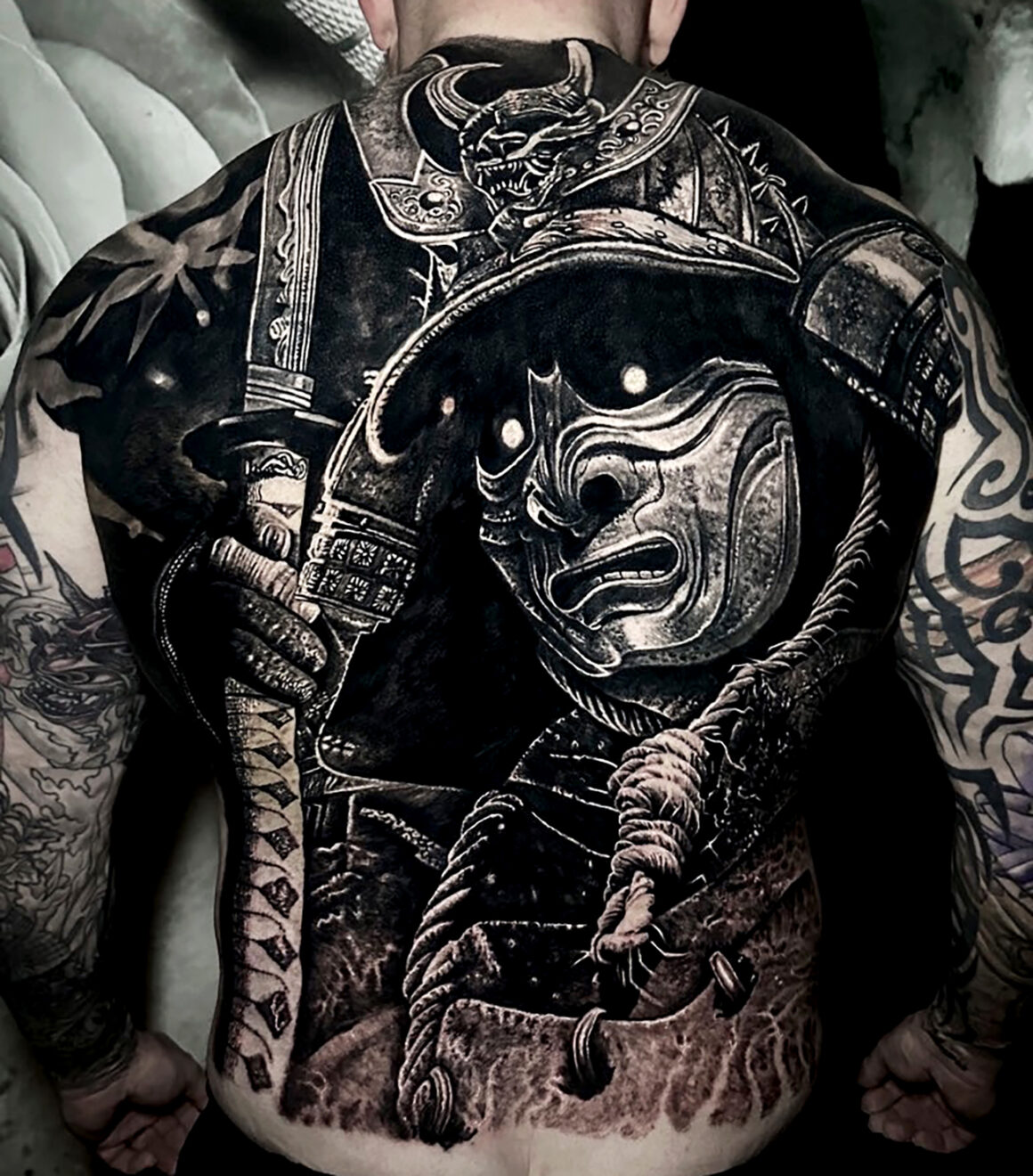
How do you approach changes in style, technique, and client preferences?
Embrace them. It’s a good thing that the industry keeps evolving—it’s changed a lot just in my career alone. As I said earlier, never sit still. Move with the times, but above all, stay true to yourself.
